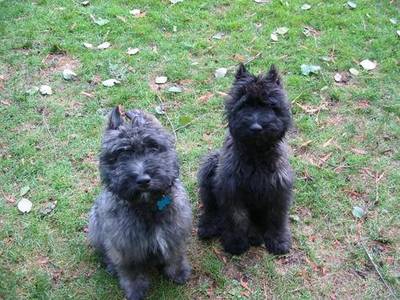| The Bouvier des Flandres has a natural herding instinct and has its origins in assisting farmers to herd their cattle in the area of southwest Flanders and the French northern plain. This herding ability earned this breed the Bouvier portion of their name, as Bouvier is French for cowherd. This breed has also been referred to as the vuilbaard, or dirty beard, and the koe hound, or cow dog, in the past. In addition to having the ability to drive cattle, the Bouvier des Flandres also acted as a guard dog for other animals on the farm. This breed initially existed in various colors and sizes, as the physical appearance was not the dominating characteristic in the choice to breed. Instead, the breeding stock was selected by their capabilities as working dogs. This breed may have had its origination from a combination of the mastiff, sheepdog, and other spaniel breeds. The exact derivation is not certain. While a standard was drawn up in the early part of the 1900s and this breed gained some popularity, the majority of these dogs were diminished during the time of World War I. There were a few Bouvier des Flandres that survived this era and one of them was used to revive the breed through its offspring. This dog was known as Nic de Sottegem. The breed gained the des Flandres portion of its name in 1922 when a revised standard identified this specific type. The Bouvier des Flandres became a favorite in show rings in America around the 1930s, but have never gained extreme popularity overall except for in the show ring and at herding trials. |





